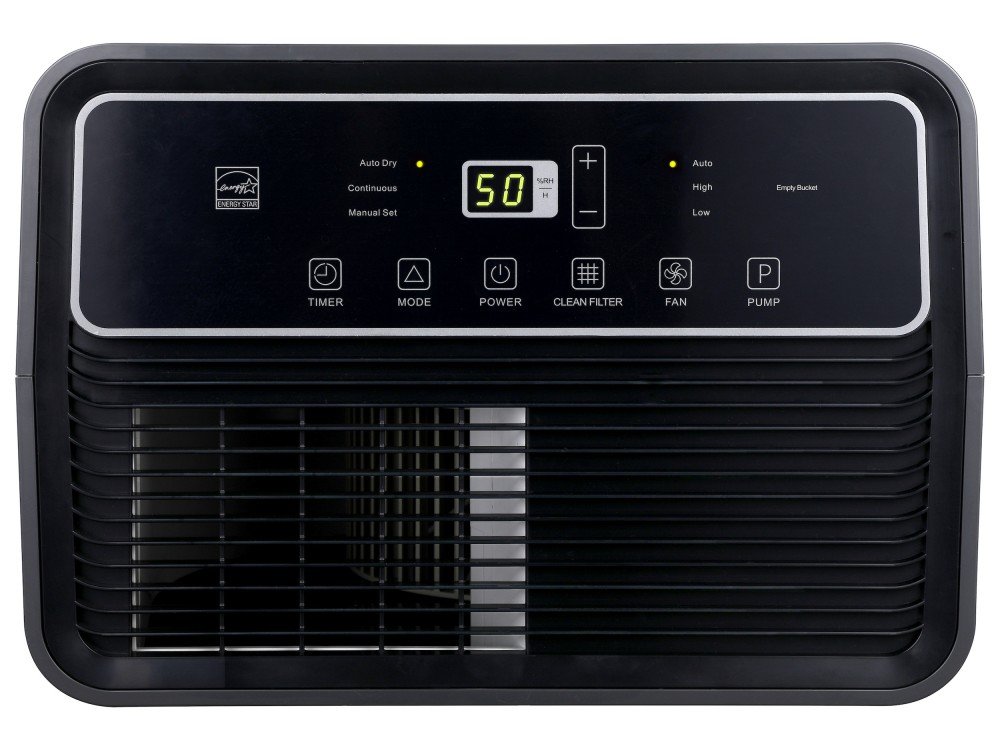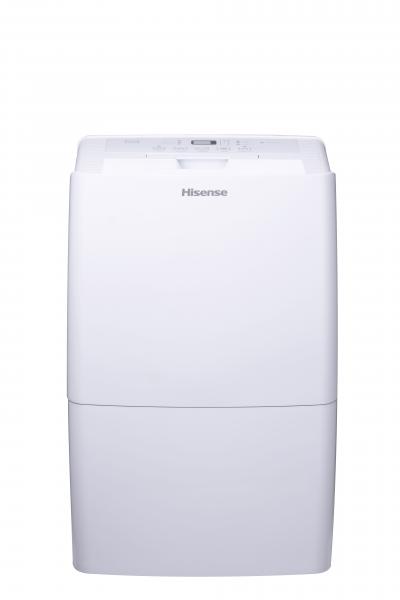
Hisense dehumidifier troubleshooting often involves checking power connections and cleaning filters. Ensure the water tank is empty.
Hisense dehumidifiers are reliable appliances designed to maintain optimal humidity levels in your home. Despite their robust performance, they can encounter issues that require troubleshooting. Common problems include power issues, clogged filters, and full water tanks. Addressing these problems promptly ensures your dehumidifier functions efficiently.
Regular maintenance and timely inspections can prevent most of these issues. This guide provides essential tips for troubleshooting your Hisense dehumidifier, ensuring it operates smoothly. Whether it’s a simple power connection check or a more detailed filter cleaning, these steps will help you maintain a comfortable and healthy indoor environment.
Common Hisense Dehumidifier Problems
Hisense dehumidifiers are reliable appliances that help maintain indoor air quality. However, users sometimes face issues with these units. This section will discuss common Hisense dehumidifier problems and offer solutions.
The water tank is a crucial part of your dehumidifier. Sometimes, it can cause problems.
- Tank Not Filling: Ensure the unit is on and set correctly. Check for blockages in the hose or tank.
- Leaking Water: Inspect the tank for cracks. Also, ensure it is securely placed.
Power issues can disrupt the functioning of your dehumidifier.
- Unit Not Turning On: Check the power cord and outlet. Ensure the plug is secure.
- Frequent Shutdowns: The unit may be overheating. Clean the filters and ensure proper ventilation.
Noise can be a common complaint with dehumidifiers.
- Loud Operation: This may be due to a dirty filter. Clean or replace the filter to reduce noise.
- Rattling Sounds: Check for loose parts or debris inside the unit. Tighten screws and clean the interior.
Water Tank Issues
Hisense dehumidifiers are reliable but may face water tank issues. Addressing these problems promptly can help maintain your dehumidifier’s efficiency. Below are common water tank issues and how to troubleshoot them.
Tank Not Filling
A common issue with Hisense dehumidifiers is the tank not filling. This can be due to several reasons:
- Check if the dehumidifier is set to the correct humidity level.
- Ensure the air filter is clean.
- Verify that the unit is placed correctly in the room.
If the problem persists, inspect the drain hose for blockages.
Tank Leaking
Another issue is the tank leaking. To troubleshoot:
- Inspect the tank for any visible cracks.
- Make sure the tank is seated properly.
- Check the drain hose connection for leaks.
If the leak continues, replace the tank or contact customer service.
Tank Full Indicator Malfunction
Sometimes, the tank full indicator may malfunction. This can be due to:
- A faulty float switch.
- Dirt or debris in the tank.
To fix this:
- Clean the tank and float switch.
- Reset the dehumidifier.
If the issue remains, consult the user manual or support.
Power Problems
Encountering power issues with your Hisense dehumidifier can be frustrating. Understanding common power problems helps you troubleshoot effectively. Here are some common power-related issues and their solutions.
Unit Not Turning On
If your Hisense dehumidifier won’t turn on, check these factors:
- Ensure the unit is plugged in securely.
- Check if the power outlet is functioning by plugging in another device.
- Inspect the circuit breaker; it might need resetting.
If these steps don’t work, the internal fuse might be blown. Consult the user manual for instructions on replacing it.
Frequent Shut Offs
A dehumidifier that shuts off frequently can be annoying. Possible reasons include:
- Full Water Tank: Check if the tank is full and empty it.
- Incorrect Settings: Ensure the humidity level is set correctly.
- Filter Issues: A dirty filter can cause overheating. Clean or replace the filter.
Regular maintenance can prevent these issues.
Power Cord Damage
Inspect the power cord for visible damage. Damaged cords can cause power problems and pose safety risks.
Steps to check the power cord:
- Unplug the dehumidifier.
- Look for cuts or frays on the cord.
- If damaged, replace the cord immediately.
Using a damaged power cord can lead to electrical hazards.

Credit: www.hisense-usa.com
Noise Concerns
Dealing with noise from your Hisense dehumidifier can be frustrating. This section will help you troubleshoot common noise issues.
Loud Operation
Your Hisense dehumidifier might be loud due to various reasons. Check if the unit is placed on a stable surface. An uneven surface can cause vibrations.
Another reason could be the fan speed. High fan speed can cause louder noise. Try setting it to a lower speed.
Rattling Sounds
If you hear rattling sounds, it might be due to loose parts. Inspect the unit for any loose screws or components. Tighten them if necessary.
Rattling can also occur if objects are placed too close to the unit. Ensure there is enough space around the dehumidifier.
Fan Noise
The fan might make noise if it is dirty. Clean the fan blades regularly to ensure smooth operation.
Another reason could be a worn-out fan motor. If cleaning doesn’t help, consider replacing the motor.
| Noise Issue | Possible Cause | Solution |
|---|---|---|
| Loud Operation | High fan speed, uneven surface | Lower fan speed, place on a stable surface |
| Rattling Sounds | Loose parts, objects too close | Tighten screws, clear space around unit |
| Fan Noise | Dirty blades, worn-out motor | Clean blades, replace motor |
Humidity Level Problems
Humidity level problems can make your dehumidifier less effective. This section will help you solve common issues. Learn how to fix these problems easily.
Not Reducing Humidity
If your dehumidifier is not reducing humidity, check the following:
- Air Filters: Ensure air filters are clean. Dirty filters block airflow.
- Room Size: Make sure the dehumidifier is suitable for the room size.
- Settings: Confirm that the humidity settings are correct.
Inconsistent Humidity Levels
Inconsistent humidity levels can be frustrating. Here are some tips:
- Close Windows and Doors: Keep the area sealed to maintain consistent levels.
- Check for Leaks: Inspect the room for any water leaks.
- Placement: Position the dehumidifier in a central location.
Humidity Sensor Issues
If the humidity sensor is not working, try these steps:
| Step | Description |
|---|---|
| Check Sensor | Inspect the sensor for dirt or damage. |
| Reset Device | Turn off and restart the dehumidifier. |
| Replace Sensor | If still faulty, consider replacing the sensor. |

Credit: m.youtube.com
Maintenance Tips
Maintaining your Hisense dehumidifier ensures it runs efficiently. Proper care reduces breakdowns and extends its life. Follow these maintenance tips for a trouble-free experience.
Regular Cleaning
Regular cleaning is crucial. Dust and dirt can block airflow.
- Unplug the dehumidifier.
- Use a soft cloth to wipe the exterior.
- Clean the air intake and exhaust grills.
For deeper cleaning, remove the water tank. Clean it with warm, soapy water. Rinse and dry before reattaching.
Filter Replacement
Filters trap dust and allergens. Replace them every three months.
- Locate the filter compartment.
- Remove the old filter.
- Insert a new filter.
Check the user manual for specific instructions. Some models have washable filters. If so, rinse the filter under running water. Let it dry completely before reinstalling.
Drain Hose Setup
Setting up a drain hose helps continuous drainage. This is handy in humid areas.
| Step | Action |
|---|---|
| 1 | Turn off the dehumidifier. |
| 2 | Locate the drain port. |
| 3 | Attach the hose to the port. |
| 4 | Place the other end in a drain. |
Ensure the hose is secure. Check for leaks periodically.
Following these tips keeps your Hisense dehumidifier in top shape. Regular maintenance prevents most issues, ensuring efficient performance.
Error Codes And Solutions
Hisense dehumidifiers are reliable devices, but sometimes they may encounter issues. Understanding error codes can help you troubleshoot and fix problems quickly. Below, we will discuss common error codes and their solutions, how to reset the unit, and when to call for service.
Common Error Codes
Knowing common error codes helps you address problems faster. Here are some frequent error codes you may encounter:
| Error Code | Description | Solution |
|---|---|---|
| E1 | Sensor error | Check and replace the sensor if needed. |
| E2 | Humidity sensor error | Clean or replace the humidity sensor. |
| E3 | Water tank full | Empty the water tank. |
| EC | Coil sensor error | Inspect and replace the coil sensor. |
Resetting The Unit
Sometimes, resetting the unit can solve many problems. Follow these steps to reset your Hisense dehumidifier:
- Turn off the dehumidifier.
- Unplug the power cord from the outlet.
- Wait for 10 minutes.
- Plug the power cord back into the outlet.
- Turn on the dehumidifier.
When To Call For Service
If you cannot solve the issue using the above methods, it may be time to call for service. Here are some situations when you should seek professional help:
- The unit continues to show error codes after resetting.
- There are unusual noises or smells from the unit.
- The dehumidifier is not removing moisture efficiently.
- You notice water leaks or electrical issues.
Calling a professional ensures your dehumidifier gets the proper care it needs.

Credit: m.youtube.com
Preventative Measures
Preventative measures are essential for maintaining your Hisense dehumidifier. These steps help in ensuring the unit runs efficiently and lasts longer. Let’s dive into some key preventative measures you can take.
Proper Placement
Proper placement is crucial for your Hisense dehumidifier’s performance. Place the unit on a flat, stable surface. Ensure there is adequate space around the unit. A minimum of 12 inches from walls or furniture is recommended. This allows for proper air circulation and optimal functioning. Avoid placing the dehumidifier near heat sources or in direct sunlight. This can cause the unit to overheat and malfunction.
Routine Inspections
Routine inspections help identify potential issues early. Start by checking the filter every two weeks. Clean or replace it as needed. Inspect the water bucket and ensure it is empty and clean. Look for any signs of mold or mildew. Examine the power cord for any signs of damage. Make sure the unit is plugged into a grounded outlet. Regular inspections can prevent larger problems down the line.
Storing The Unit
Proper storage of your Hisense dehumidifier is vital. Before storing, clean the unit thoroughly. Empty the water bucket and dry it completely. Remove and clean the filter. Wrap the power cord neatly and secure it with a twist tie. Store the unit in a cool, dry place. Avoid areas with extreme temperatures or high humidity. Proper storage ensures your dehumidifier is ready for use when needed again.
Frequently Asked Questions
How Do I Reset My Hisense Dehumidifier?
To reset your Hisense dehumidifier, unplug it from the power source. Wait for about 10 minutes. Then plug it back in and turn it on. This should reset the system.
Why Is My Hisense Dehumidifier Not Working?
If your Hisense dehumidifier is not working, check the power supply. Ensure the water tank is properly seated. Clean or replace the air filter if necessary.
How Do I Clean The Filter On My Hisense Dehumidifier?
To clean the filter, turn off and unplug the dehumidifier. Remove the filter and wash it with warm, soapy water. Let it dry completely before reinstalling.
What Does The Error Code On My Hisense Dehumidifier Mean?
Error codes indicate specific issues with your dehumidifier. Refer to the user manual for detailed explanations of each error code and their solutions.
Conclusion
Troubleshooting your Hisense dehumidifier can save time and effort. Follow the outlined steps for common issues. Regular maintenance ensures optimal performance. Always consult the user manual for specific guidance. By addressing these problems promptly, you can maintain a comfortable and healthy home environment.
Enjoy a hassle-free experience with your Hisense dehumidifier.



